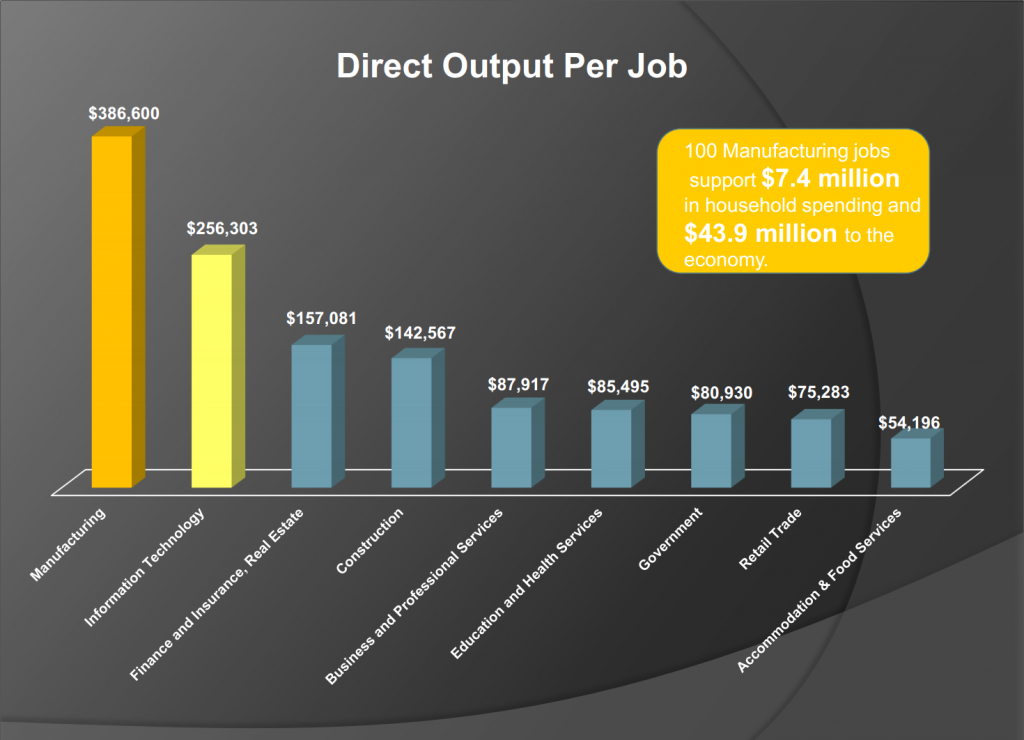One thing you will quickly discover if you get to know people in the manufacturing industry is how busy they are. I guess it should be no surprise that they stalwarts of their local communities in terms of jobs and direct economic output. How so? We’ll address that shortly. People in the industry seem to juggle so many balls that they are unable to participate in things like Rotary, Lions, Kiwanis or even their local Chamber of Commerce. Their “free” time is often spent participating in industry related organizations such as SME, AMT, AWS or even advocacy oriented organizations such as CMTA (in California anyway). A vacation to them is often a trip off to IMTS, Fabtech or Westec/Eastec.
One of those manufacturers, sharing one of those stories.
Recently while reading an article written by Christian Frueh of Evaero (client) I noticed a crushing statistic. The statistic was the regulatory cost per employee for manufacturers with less than 50 employees:
In manufacturing firms with less than 50 employees there is a disproportionate regulatory cost per employee of over 3 to 1 compared to all businesses of that size.
What about those jobs and direct economic benefit?
Earlier I eluded that manufacturers provide benefit to their communities in jobs and direct economic output. That ties into this overall picture. While talking with Bill Gaines, the first guest of the Manufacturing Advocates Podcast, I learned that manufacturing jobs provide a substantially larger direct output in total dollars of benefit to their local communities than other jobs. The compared jobs include IT, Finance, Insurance and others. Many of the jobs don’t require a 4 year degree and pay well, too. Here is another graphic on this subject for your consideration when evaluating the value of manufacturing in the USA:
This creates a very disturbing picture, the employers who provide the greatest output per job to their local economies are strapped with the largest regulatory expense per employee. If we want our communities to succeed, companies with less than 50 employees with high direct output are the sweet spot for success. They need our help, and together we can do something about it. Head over to the Manufacturing Advocates Podcast and listen to stories of people making a difference. Share their stories with your friends. Tell the next person who will listen that in spite of a 3 to 1 disadvantage in regulatory overhead, manufacturers are contributing direct output dollars to their communities 4 to 1 or more over most vocations.
Beyond the Shop Floor
Now you know why we went beyond the shop floor to help get the word out about the importance of manufacturing. There are great jobs to be had working for great companies that overcome substantial burdens to contribute greatly to their communities.


[…] proudly support SVMI as an affiliate member, and will continue to advocate for all US manufacturers as well as manufacturing in general. It is a key industry to create opportunity and economic […]